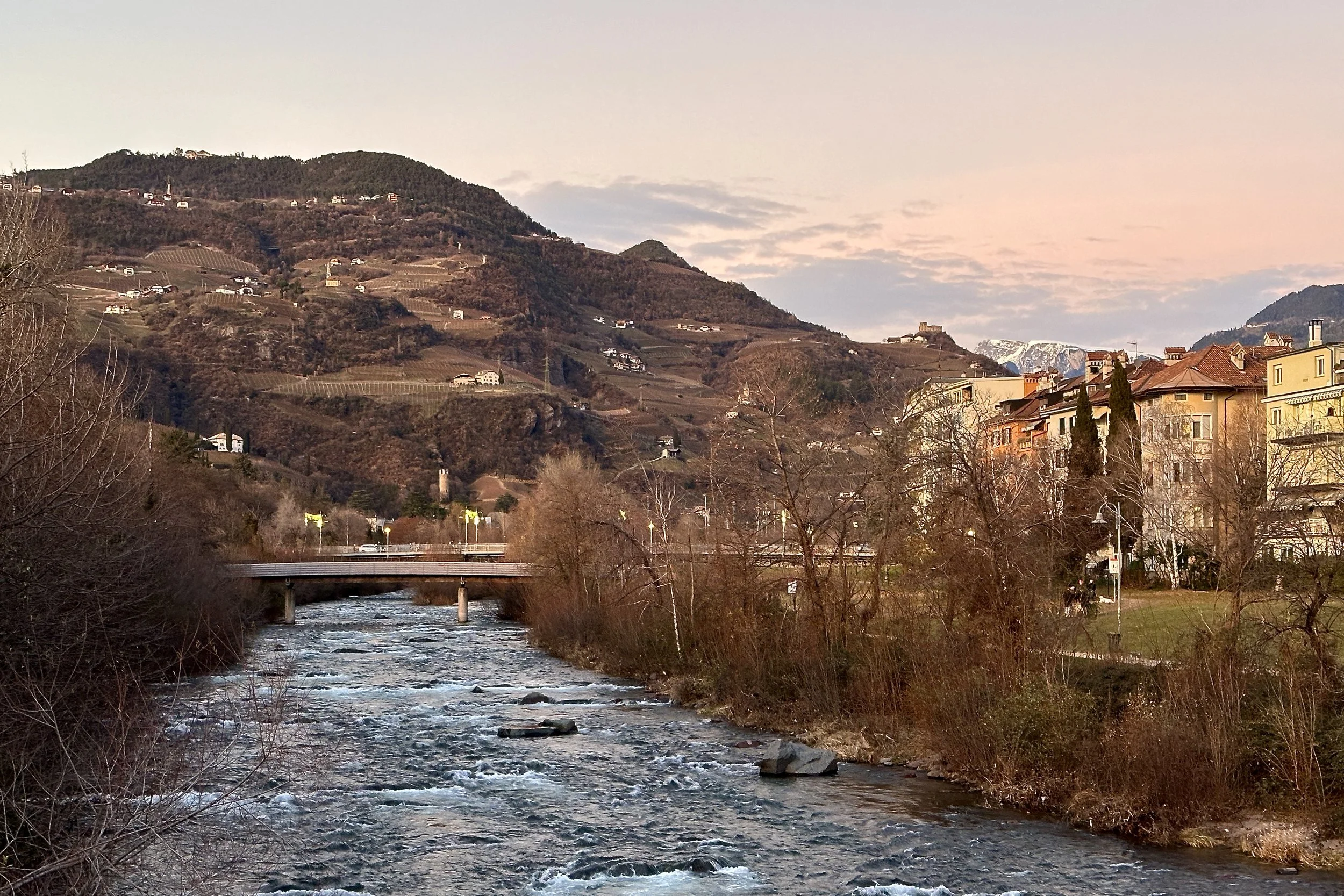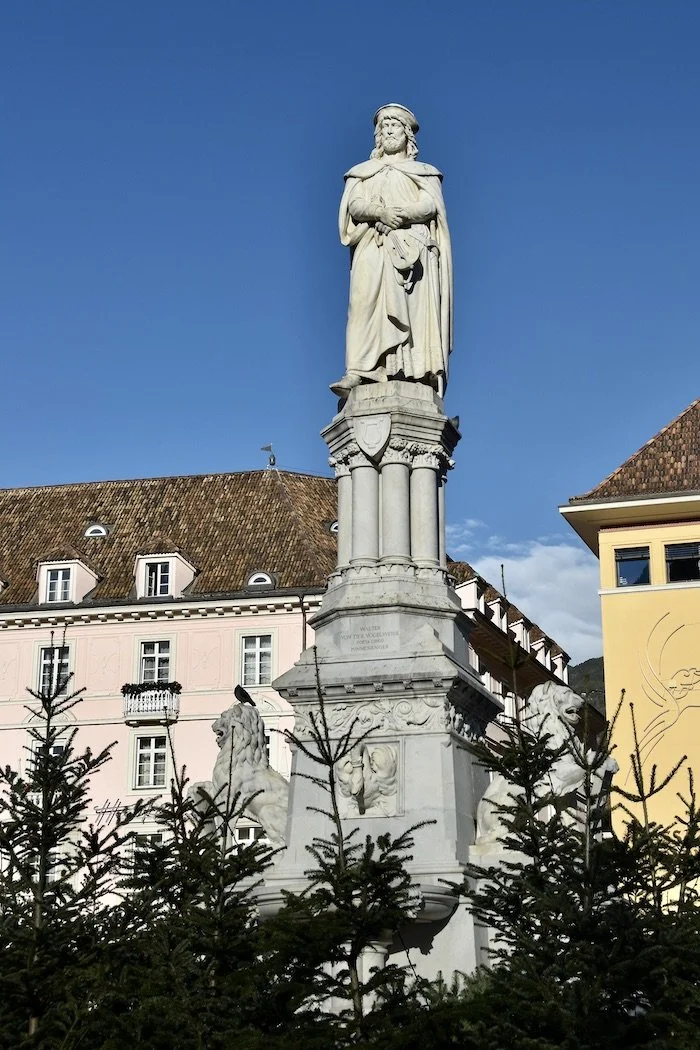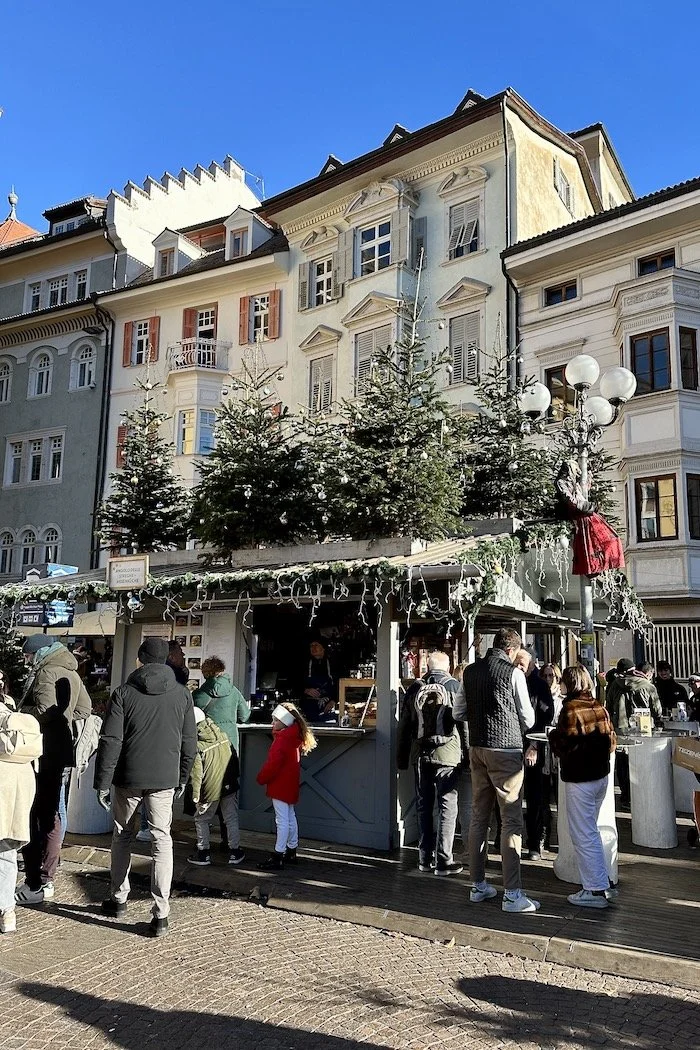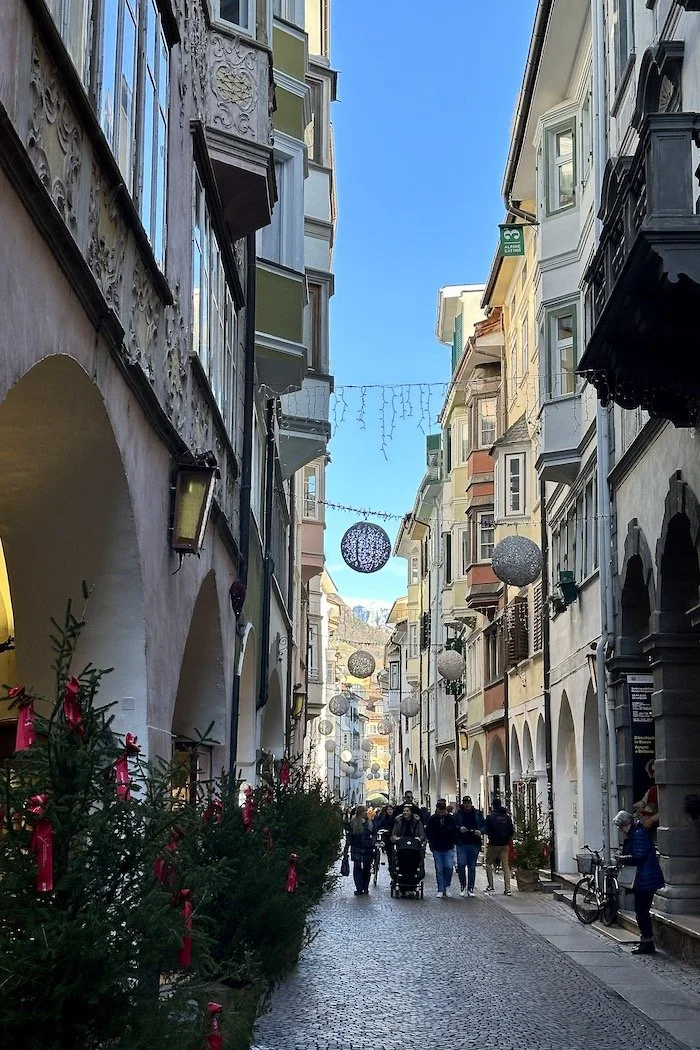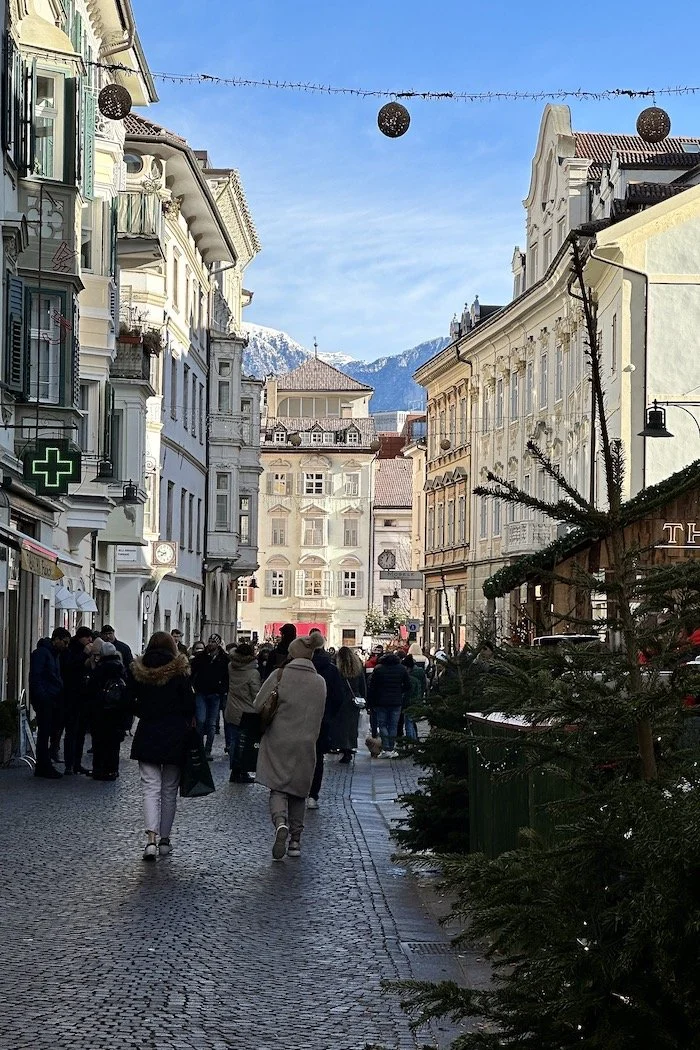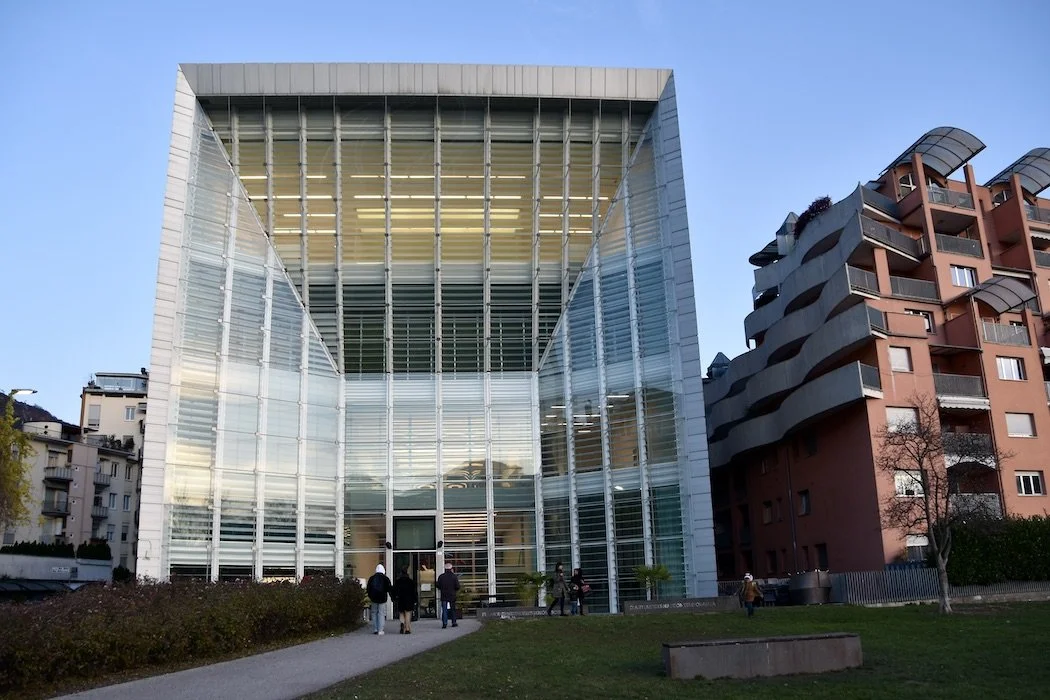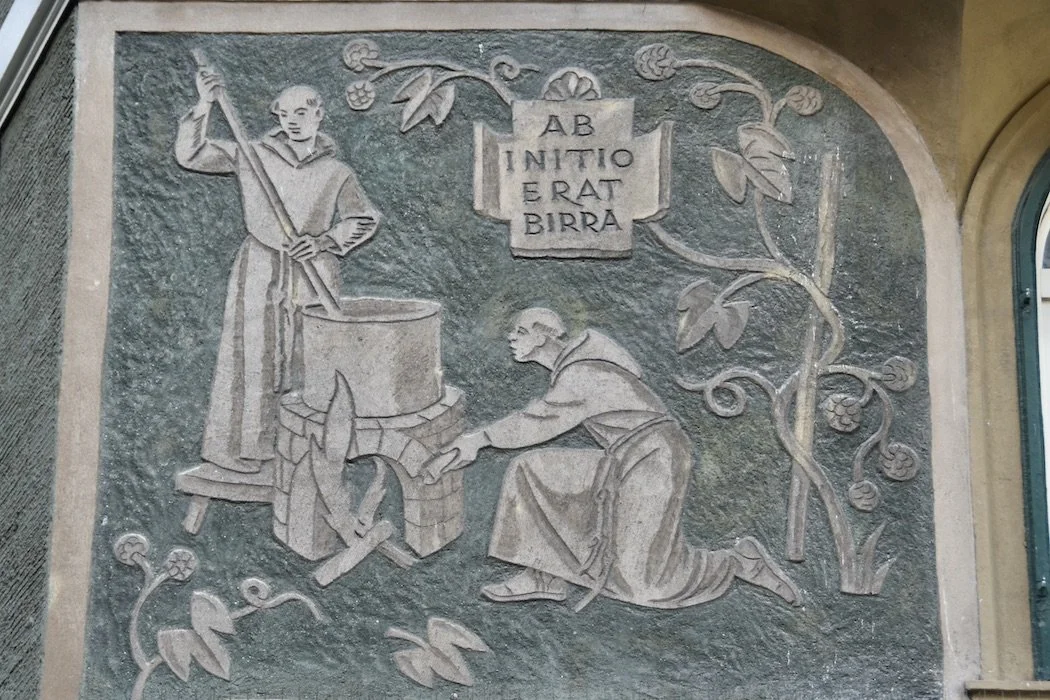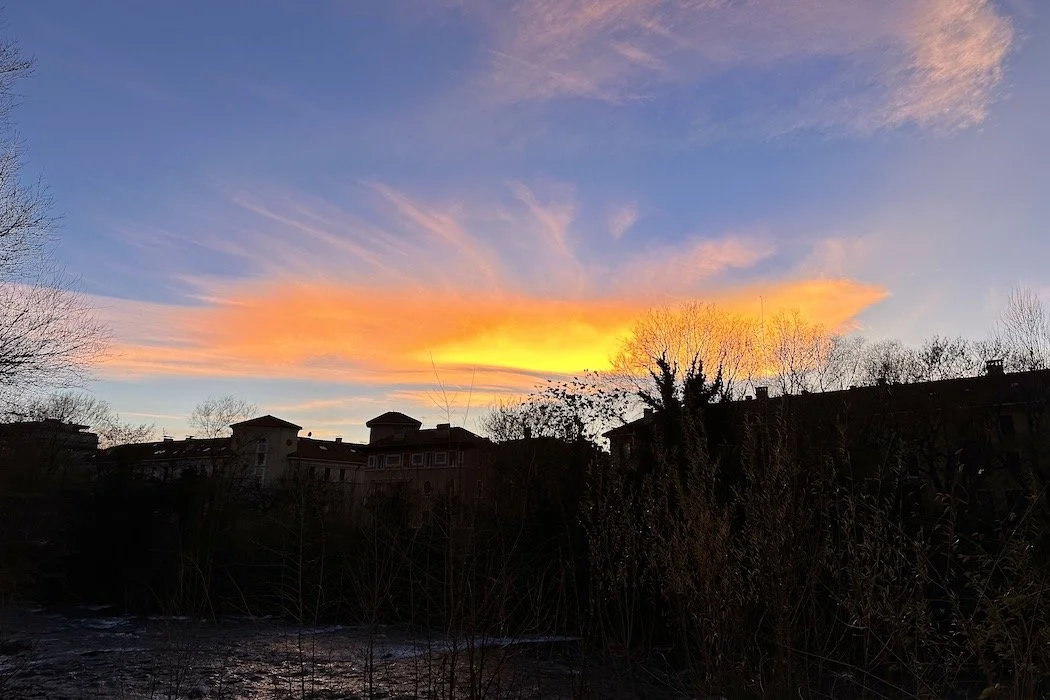Enjoy Winter in Bolzano
Bolzano at the River Talvera at sunset
“…in winter, enjoy.” — William Blake
The northeastern Italian town of Bolzano, set in a valley among hilly vineyards, is the gateway to the Dolomite mountain range. As the largest city in South Tyrol, it is the capital of an autonomous province that preserves the rights of the German-speaking minority in Italy. The region, part of the Austro-Hungarian Empire until 1918, is regarded as a bridge between Northern and Southern Europe. It is an Italian city like no other, where German is heard on the streets more often than Italian, and the architecture and reserved atmosphere also feel more German. Yet, Italian joviality is omnipresent, and the two cultures mix delightfully.
Inhabited by the Raetian tribe in ancient times, the Romans conquered the area in 15 BC. A Roman military cemetery remains, like an early Christian basilica under the beautiful Duomo di Bolzano. Started 1184, the cathedral entrance façade remains plainly Romanesque, the interior feels Gothic, and the roof is colorfully tiled. The Germanic presence still felt in Tyrol today stems from Bavarian 7th-century immigration along two main Alpine crossings, the Reschenpass and the Brenner pass, to their meeting point at this location. Combined with market-status designation in the late 12th century, Bolzano prevailed as an important trading city for centuries.
The medieval city center between the Rivers Talvera and Eisack, and the foothills brims with culture, history, and winter atmosphere. Piazza Walther, a vineyard until 1808, is the largest square, elegant and modern by Italian standards. In the center stands a prominent statue of Walther von der Vogelweide, a notable medieval German minstrel, who began one of his songs mentioning Bolzano. In December, Italy’s oldest Christmas market surrounds the statue and is renowned for locally produced crafts, artwork, food, and wines. From the marketplace to the town’s restaurants, the regional food is an incredible cultural mix of Italian and Germanic influences, ranging from schnitzel and strudel to mushroom risotto, and polenta.
Several smaller, older squares represent medieval purposes: Kornplatz (Piazza del Grano), was the grain market since 1271 where the Romanesque Waaghaus (weigh house) still stands, adorned with a fresco of the town scales, and another attesting to beer brewing; Town Hall Square sets up a skating rink for winter enjoyment; Piazza delle Erbe hosts the bustling daily market year-round. Connecting these squares, is the city’s main artery, the pedestrian Laubengasse (Via dei Portcici), lined with beautifully decorated houses, medieval arcades, and wonderful shops.
The South Tyrol Museum of Archeology is well worth a visit for its feature exhibit: the Neolithic mummy of Ötzi, the iceman. A merchant who died around 5000 years ago high in the nearby mountains, he was discovered in 1991 largely intact with clothing, tools, and hunting implements. Those and his DNA have provided an astounding insight into life in the region in his time.
At the edge of town, the Talferwiesen (Parco Talvera) meadows beside the river incorporate walking paths, and The Museion Museum of Modern Art has ever-changing exhibits. The museum café is a popular late afternoon spot for an aperitif and winter sunset-watching. Near the opposite end of the Parco Talvera, one castle, the imposing 13th-century Maretsch Castle (Mareccio), is located in town, and several others are accessible via three cable cars to hiking paths that afford stunning views over vineyards, rolling hills, snow-capped mountains.
Don’t Miss:
Being amazed by the iceman, Ötzi, and his belongings at the South Tyrol Museum of Archeology.
Serendipity:
Locals along the way- when a delightful conversation with a local Italian-speaking woodworker at his Christmas Market stall switches between German and English.
Lunch:
Exil Lounge Café on Piazza del Grano (Korn Platz) for fresh sandwiches and salads. Just across the way, have wine and snacks (“Häppchen”) in the afternoon at Hotel Fil.
Dinner:
Stadt Hotel Restaurant on Piazza Walter Square in a historic building for warming soup and tea.
Subscribe for inspiration to have my posts drop directly into your inbox. *If you enjoyed reading, please share this post with like-minded travelers.*
*All photographs are mine, taken with my Nikon D5600 or iPhone 14 Pro.*

